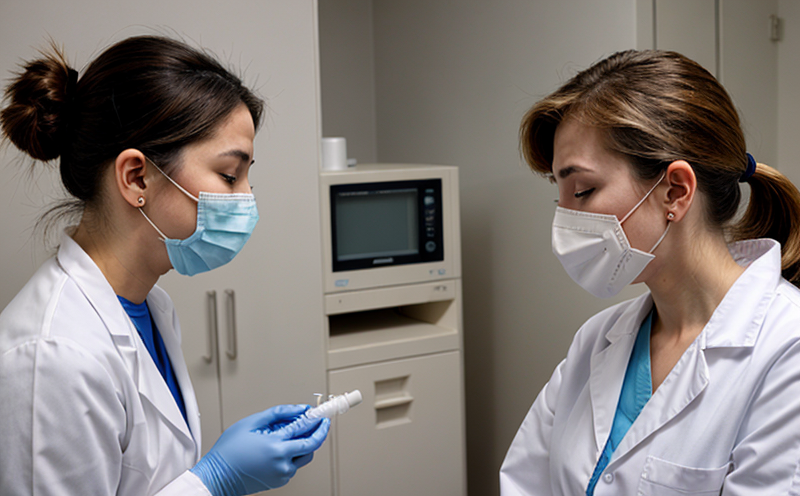Immunomodulatory Activity Testing of Veterinary Pharmaceuticals
The Immunomodulatory Activity Testing of veterinary pharmaceuticals is a critical process that evaluates the effect of drugs on the immune system. This testing ensures that medications used in veterinary medicine do not overstimulate or suppress the immune response excessively, which could lead to adverse effects on animal health.
Immunomodulatory activity tests are conducted following international standards such as ISO and ASTM guidelines. The primary objective is to determine whether a drug can modulate the immune system in a way that maintains homeostasis without causing harm. This testing is especially important for drugs intended for use in immunocompromised or elderly animals.
The process involves several steps, including preparation of the test samples, incubation with various immune cells, and measurement of cellular responses. The use of high-resolution flow cytometry allows for detailed analysis of immune cell behavior under the influence of the drug. This technology provides precise quantification of changes in cell morphology and function.
Sample preparation is crucial for accurate results. Cells are typically isolated from blood samples or other relevant sources, then treated with the pharmaceutical agent before being analyzed. The testing can be performed on different types of immune cells such as T-cells, B-cells, macrophages, and dendritic cells.
Instrumentation plays a vital role in this testing. High-speed flow cytometers are used to analyze cell surface markers and intracellular molecules that indicate activation or inhibition states. These instruments provide real-time data on the physiological state of immune cells after exposure to the drug.
The results of these tests are reported using standardized criteria, which include quantitative measures such as proliferation rates, cytokine production levels, and apoptosis rates. Qualitative assessments may also be made based on morphological changes observed in the cells.
Understanding the immunomodulatory activity is essential for ensuring that veterinary pharmaceuticals are safe and effective when used to treat conditions like allergies or autoimmune disorders in animals. It helps ensure that treatments do not disrupt normal immune function, thereby avoiding potential side effects that could compromise animal health.
Why It Matters
Ensuring the safety and efficacy of veterinary pharmaceuticals is paramount for both animal welfare and public health. By conducting comprehensive immunomodulatory activity tests, we can identify potential risks early in the drug development process. This proactive approach helps prevent the release of products that might cause unintended immune reactions.
The accurate assessment of a drug's impact on the immune system is particularly important for medications targeting specific immune pathways. For instance, drugs designed to treat inflammatory diseases must not only reduce inflammation but also avoid compromising the body’s ability to fight infections effectively.
Moreover, these tests contribute significantly to regulatory compliance. Regulatory bodies like the FDA and EMA require rigorous testing before approving any new veterinary drug for market release. Compliance with these regulations ensures that products meet stringent quality standards and are safe for use across various species.
Why Choose This Test
Selecting the right test method is crucial when developing veterinary pharmaceuticals. Immunomodulatory activity testing offers several advantages over other types of assays:
- Precision: High-resolution flow cytometry provides detailed insights into cellular responses, allowing for precise quantification and qualitative assessment.
- Comprehensive: The test evaluates multiple aspects of immune function, including cell proliferation, cytokine production, and apoptosis rates.
- Regulatory Compliance: Adherence to international standards ensures that the testing meets all necessary regulatory requirements.
Use Cases and Application Examples
| Application Example | Description | Test Methodology |
|---|---|---|
| Treatment for Autoimmune Disorders | Evaluating drugs intended to modulate the immune system in animals with autoimmune conditions. | Flow cytometry analysis of T-cell activation and cytokine production. |
| Allergy Management | Determining whether a drug can effectively manage allergic reactions without causing significant immunosuppression. | Assessment of B-cell proliferation rates and histamine release. |
| Application Example | Description | Test Methodology |
|---|---|---|
| Infectious Disease Therapy | Ensuring that a drug does not overstimulate the immune system, which could lead to an excessive inflammatory response. | Morphological analysis of macrophages and dendritic cells post-treatment. |
| Elderly Pet Care | Testing drugs aimed at reducing inflammation in elderly pets without causing immunosuppression. | Flow cytometry to assess T-cell function and cytokine levels. |





